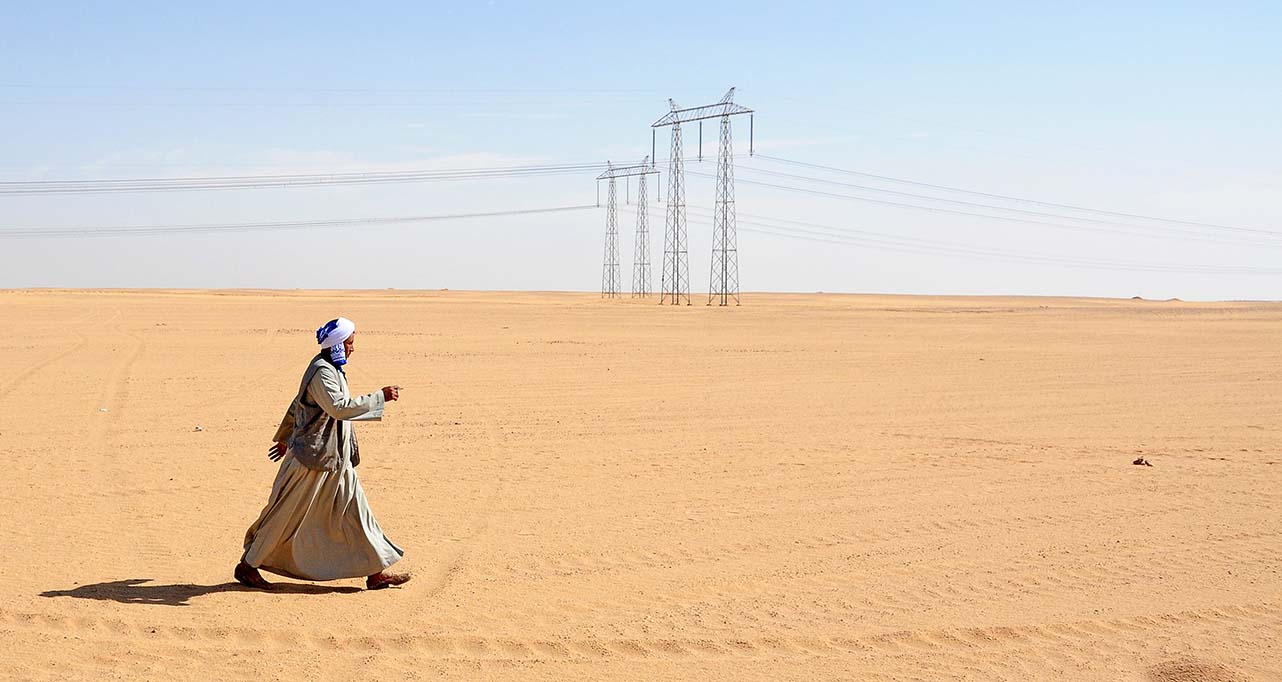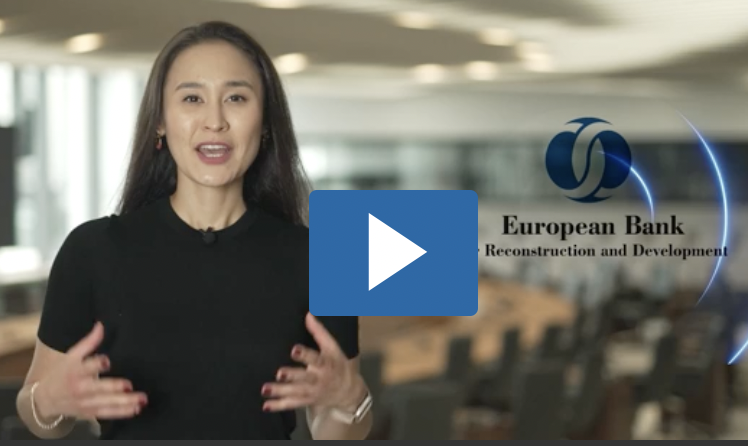Once upon a time, farming closely followed the cycles of nature, with the by-products from each stage of production being fed into another growth process on the land so no materials were wasted. Manure from cows fed the fields where crops were grown. Cropped land replenished itself by being left fallow every third year. Animals fed on grassland or kitchen scraps.
Now - after a 20th century of more intensive industrial-style farming, which both produces and creates more waste, doing more environmental damage - some of the smartest brains in the business want to bring back elements of this wholesome circular tradition.
One imaginative venture illustrating this is the plan by a 21st-century organic food producer on the northern rim of Europe to restore an updated version of the old farming cycle, while keeping the benefits of modern technology. Known as closed-loop organic farming, the aim is familiar: recycling waste from each farming process into the next process to minimise losses.
One of the activities of Lithuania’s AB Auga Group, in which the EBRD bought an 8.7 per cent stake in 2018, is raising cattle. With EBRD help, it has installed biogas plants to process cow manure into bio-methane. This bio-methane is used to fuel tractors and farm machines for Auga’s crop fields, instead of polluting diesel. And its by-products – known as digestate – are spread on the fields as fertiliser.
This transformation, known as Project Circulus, is one example of a profound philosophical change taking hold in bigger thinking about the economic future.
As climate change forces us to recognise that an ever-increasing number of people live in a world with finite resources, the need for change has become clearer. This has brought wider appreciation of the economic potential of the “recycling-plus” circular economic approach.
“The circular economic model appears to be one of the solutions that can deliver not only on the climate crisis but also, more generally, in terms of encouraging sustainable consumption patterns without compromising on quality of life,” says Gianpiero Nacci, the EBRD’s deputy head of Energy Efficiency and Climate Change.
As part of EU Green Week, he spoke on behalf of the EBRD in Brussels today at an EBRD-hosted circular economy session – a hot topic these days on the green conference circuit.
Formally, a circular economy seeks to decouple economic activity from consumption of finite resources by keeping products and materials permanently in use (in one form or another) while minimising waste and value-chain risks.
The “modern” linear economic model that gained ground with the Industrial Revolution - in which virgin materials have been extracted from the earth, transformed into products, used, and then disposed of in vast quantities, leaving an unperceived cost to society and the environment in the form of huge amounts of waste – is now losing favour as its risks become clearer.
Unlike the linear economy, the basis of a circular economy is a zero waste economy, where everything that we produce and consume can return safely to nature or society. A zero waste circular economy proposes a transformation of our production and consumption patterns to achieve high resource efficiency and a move towards zero waste and zero emissions.
Over the past decade, economists and policy-makers, who are now aware of these wastes as costs, have been moving towards a more circular approach. In Europe, these principles were formalised in 2015 as an EU circular economy action plan. So, as Mr Nacci points out, “this has been entrenched in EU policy and is one criterion to look into in designing policy instruments”.
What do we need to change to move to a circular economy?
There’s a whole complex of design issues to be figured out, as firms involved in different parts of our modern life cycles learn to work together in new ways.
Take construction. When a building is knocked down, the construction waste left is a mix of everything. It isn’t easy to separate out the durable parts from the non-durable. But what if the people involved in constructing it at the start of its life had designed it so that could happen?
“To introduce circular thinking you need to start from the very way materials and buildings are designed through their life cycle,” Mr Nacci said. “You’d need to support more modular construction, a design concept where the mineral material - like cement - can be separated from biomass building materials – wood - so parts that are durable can be reused, while those with a more limited lifetime can be more easily removed and replaced.
“First of all you have to design in a way the parts can be separated. Then you have to have the logistics in place for the durable part to be returned - and the incentive to do so. It’s quite complex to put it in place and requires quite a profound transformation of the way logistics works, a transformation of the way we use things.”
Another part of the idea is “dematerialisation” – basically, finding hi-tech ways to use less stuff. One example is videoconferencing. If you can meet colleagues on-screen, you’ll be using less resources to travel to meet physically. Equally, if you interact with the tax office online, e-government will mean saving on paper and office rooms.
Another element is transforming goods into services: replacing the car you privately own but leave parked for 99 per cent of the time with a car rental service you only use when you need it.
This is not the same thing as nostalgically turning back the clock to pre-industrial ways, Mr Nacci stresses. “It’s more about considering what type of systems we can introduce that deliver the same quality, the same level of services and inputs to life - but with less material and energy intensity.”
Today’s emphasis is not on making goods that last forever – say, going on using granddad’s fob watch because it still works and it would be a waste not to.
“Durability can be something positive as long as it doesn’t delay technological innovation. But if a new technology comes in that ultimately delivers the same result with less material, and maybe no material at all, durability can in fact be a negative element.”
The EBRD and the circular economy
The EBRD is already a front-runner among international financial organisations in circular economy work, along with the European Investment Bank, and promotes it in three major ways. It has many engagements with external parties from banks to think-tanks. It works closely with the European Commission. And it has financed projects on the ground that are explicitly aligned with the circular economic model.
Several are in Turkey. The journey towards a near zero waste society in Turkey began with the Near Zero Waste Programme (NØW), introduced in 2015. This supports waste minimisation and resource efficiency investments.
One firm in the programme is Ege Profil, the PVCwindows profile manufacturer in Turkey. It is implementing a PVC recycling scheme – a pioneering initiative in Turkey, where construction waste, a major source of PVC waste, represents 11 per cent of the country’s municipal waste streams (about 70 per cent is deposited in landfills).
Enfaş, the energy arm of Turkey’s largest dairy firm, Sütaş Group, is another. Founded in 2011, it has become one of the leading bioenergy- companies in Turkey. With EBRD support, Enfas is introducing an innovative and unique biomass supply chain model, a first of its kind in Turkey, which entails the transformation of organic wastes from animal farms, agro-processing industries and municipalities, which are typically dumped in landfills, into useful bioenergy and organic fertilisers.
Promoting the circular economy here and elsewhere in the EBRD’s regions, says Mr Nacci, is especially important because the bank works in parts of the world that are “very linear. In some cases this is because countries are mineral exporters, so their entire economy is part of the global linear paradigm. Elsewhere, they struggle to make regulations to reduce the amount of landfill.”
But learning to think, plan and design for a more sustainable future is vital everywhere, he adds. “Our way of living has been designed around the linear concept. The way cities are designed, our value chains, follow linear lines. The circular economic approach will definitely make a difference in the way we look at our economic system and the organisation of life.”



